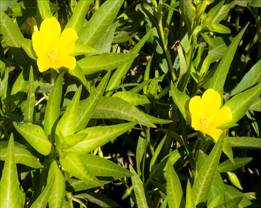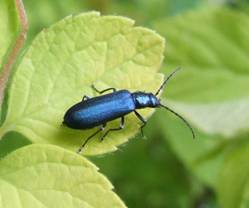AGRO 304 :: Lecture 07 :: METHODS OF WEED CONTROL - CHEMICAL AND BIOLOGICAL METHODS HERBICIDAL CONTROL OF WEEDS
![]()
Herbicides are chemicals capable of killing or inhibiting the growth of plants. In the last 40 years or so, man has greatly improved upon his weeding efficiency by supplementing the conventional weeding methods with herbicides. It has saved farmers of undue, repeated inter-cultivations and hoeing, and has helped him in obtaining satisfactory weed control where physical methods often fail. Today, we have over 1501 herbicides in common use for selective and non-selective weed control in different areas. These chemicals vary greatly in their (a) molecular structures, (b) mobility within plants, (c) selectivity, (d) fate in soils, and (e) response to environment. Important properties and uses of some common herbicides in use today are discussed later in Chapter 13.
Many chemicals have shown high codes of selectivity to certain crops, killing the weeds effectively. But proper selection of the herbicide, its rate, time, and method of application are very important to obtain the desire degree of weed control and crop selectivity.
Herbicides are tools, and tool must be used with care. Many developing nations have made a good beginning in the use of herbicides in agriculture, but more comprehensive research needs to be done before extending it to new situations.
Benefits of Herbicides
Herbicides were developed in the western world primarily to overcome the shortage of farm labour for weeding crops. However, during the past four decades, slowly the utility of herbicides has also been realized in the labour-rich tropical world, for varied reasons. Given adequate labour and money to remove weeds manually, still many advantages accrue from the judicious use of herbicides. Important among these are the following:-
1. In monsoon season incessant rainfall may make physical weeding infeasible. Herbicides can be used to ensure freedom of crops from weeds under such a condition. Also, during the early crop growth period when many fields need weeding simultaneously, even in labour-rich countries like India, Pakistan, Bangladesh, Nepal, Nigeria, and Sudan, there is certainly a weeding bottleneck in crop production. The soil applied herbicides can be of great help in these regions in boosting crop production.
2. Herbicides can be employed to control weeds as they emerge from the soli to eliminate weed crop interference even at a very early stage of crop growth. But by physical methods weeds are removed after they have offered considerable competition to the crops, and rarely at the critical time. Thus, herbicides provide benefits of timely weed control.
3. Herbicides can kill many weeds that survive by mimicry, for example, wildoat (Avena spp.) in wheat and barnyardgrass (Echinochola spp.) in rice. Weeds that resemble crop plants usually escape physical weeding.
4. Herbicidal control does not dictate strict row spacing’s. In physical weed control, on the other hand, the crop rows have to be sufficiently wide to accommodate weeding implements, else hand weeding and hand-pulling of weeds has to be resorted to.
5. Herbicides bring about longer lasting control of perennial weeds and brushes than is possible with any physical control method. Many modern herbicides can translocate considerably deep in the underground system of weeds and damage them.
6. Herbicides are convenient to use on spiny weeds which cannot be reached manually.
When cultivators or hoes are worked hard in an attempt to uproot the established weeds, they may cut many feeding roots of a crop like maize, which are appreciable in the first 10 cm depth of the soil. Their lateral growth fully occupies the inter-row spaces.\
7. Herbicides are safe on erodible lands where tillage may accelerate soil and water erosion. Excessive tillage, in any case, spoils soil structure, reduces organic matter content, and depletes moisture status of the soil.
8. Herbicides kill weeds in situ without permitting their dissemination. Tillage on the other hand, may fragment the vegetative propagules of the weeds and drag them to new sites.
9. Herbicide sprays easily reach the weeds growing in obstructed situations, such as utility-right-of-way, under fruit trees, and on undulating lands.
Some other benefits of using herbicides include (a) fewer labour problems, (b) greater possibility of farm mechanization, (c) easier crop harvesting and (d) lower cost of farm produce. In dry land agriculture, effective herbicidal control ensures higher water use by crops and less crop failures due to drought.
Limitations of Herbicides
Like any other method of weed control, herbicides have their own limitations. But with proper precautions these limitations can be overcome, markedly. Important limitations in the use of herbicides are as follows.
1. In herbicidal control there is no automatic signal to stop a farmer who may be applying the chemical inaccurately till he sees the results in the crops sprayed or in the rotation crops that follow.
2. Even when herbicides are applied accurately, these may interact with environment to produce un-intended results. Herbicide drifts, wash-of, and run-off can cause considerable damage to the neighbouring crops, leading to unwarranted quarrels.
3. Depending upon the diversity in farming, a variety of herbicides must be stocked on a farm to control weeds in different fields. On the contrary, for physical control of weeds a farmer has to possess only one or two kinds of weeding implements for his entire farm.
4. Above all, herbicidal control requires considerable skill on the part of the user. He must be able to identify his weeds and possess considerable knowledge about herbicides and their proper usages. Sometimes, an error in the use of herbicides can be very costly.
5. In herbicide treated soils, usually, crop failures cannot be made up by planning a different crop of choice. The selection of the replacement crop has to be based on its tolerance to the herbicide already applied.
6. Military use of herbicides is the greatest misfortune of their discovery. In Vietnam, 2,4-D and 2,4,5-T, for example, were used for defoliating forests and crops, leading to miseries to the innocent civilians. In future, the chemical warfare with residual herbicides may be even more devastating, which must be avoided at all costs.
BIOLOGICAL CONTROL
Use of living organism’s viz., insects, disease organisms, herbivorous fish, snails or even competitive plants for the control of weeds is called biological control. In biological control method, it is not possible to eradicate weeds but weed population can be reduced. This method is not useful to control all types of weeds. Introduced weeds are best targets for biological control.
Qualities of bio-agent
- The bio-agent must feed or affect only one host and not other useful plants
- It must be free of predators or parasites.
- It must readily adapt to environment conditions.
- The bio-agent must be capable of seeking out itself to the host.
- It must be able to kill the weed or atleast prevent its reproduction in some direct or indirect way.
- It must possess reproductive capacity sufficient to overtake the increase of its host species, without too much delay.
Merits
- Least harm to the environment
- No residual effect
- Relatively cheaper and comparatively long lasting effect
- Will not affect non-targeted plants and safer in usage
Demerits
- Multiplication is costlier
- Control is very slow
- Success of control is very limited
- Very few host specific bio-agents are available at present
Mode of action
- Differential growth habits, competitive ability of crops and varieties prevent weed establishment Eg. Groundnut, cowpea fast growing and so good weed suppresser.
- Insects kill the plants by exhausting plant food reserves, defoliation, boring and weakening structure of the plant.
- Pathogenic organisms damage the host plants through enzymatic degradation of cell constituents, production of toxins, disturbance of harmone systems, obstruction in the translocation of food materials and minerals and malfunctioning of physiological processes.
Outstanding and feasible examples of biological weed control
- Larvae of Coctoblastis cactorum, a moth borer, control prickly pear Opuntia sp. The larvae tunnel through the plants and destroy it. In India it is controlled by cochinial insects Dactylopius indicus and D. tomentosus

- Lantana camara is controlled by larvae of Crocidosema lantana, a moth bores into the flower, stems, eat flowers and fruits.
- Cuscuta spp. is controlled by Melanagromyza cuscutae
- Cyperus rotundus - Bactra verutana a moth borer
- Ludiwigia parviflora is completely denuded by Altica cynanea (steel blue beetle)


- Herbivorous fish Tilapia controls algae. Common carp, a non-herbivorous fish controls sub-mersed aquatic weeds. It is apparently due to uprooting of plants while in search of food. Snails prefer submersed weeds.
Bio-Herbicides/ Mycoherbicides
Defn: The use of plant pathogen which are expected to kill the targeted weeds.
These are native pathogen, cultured artificially and sprayed just like post-emergence herbicides each season on target weed, particularly in crop areas. Fungal pathogens of weed have been used to a larger extent than bacterial, viral or nematode pathogens, because, bacteria and virus are unable to actively penetrate the host and require natural opening or vectors to initiate disease in plants.
Here the specific fungal spores or their fermentation product is sprayed against the target weed. Some registered mycoherbicides in western countries are tabulated below.
No |
Product |
Content |
Target weed |
1. |
Devine |
A liquid suspension of fungal spores of Phytophthora palmivora causes root rot. |
Strangle vine (Morrenia odorata) in citrus |
2. |
Collego |
Wettable powder containing fungal spores of Colletotrichum gloeosporoides causes stem and leaf blight |
Joint vetch (Aeschyomone virginica) in rice, soybean |
3. |
Bipolaris |
A suspension of fungal spores of Bipolaris sorghicola |
Jhonson grass (Sorghum halepense) |
4. |
Biolophos |
A microbial toxin produced as fermentation product of Steptomyces hygroscopicus |
Non-specific, general vegetation |
| Download this lecture as PDF here |
![]()